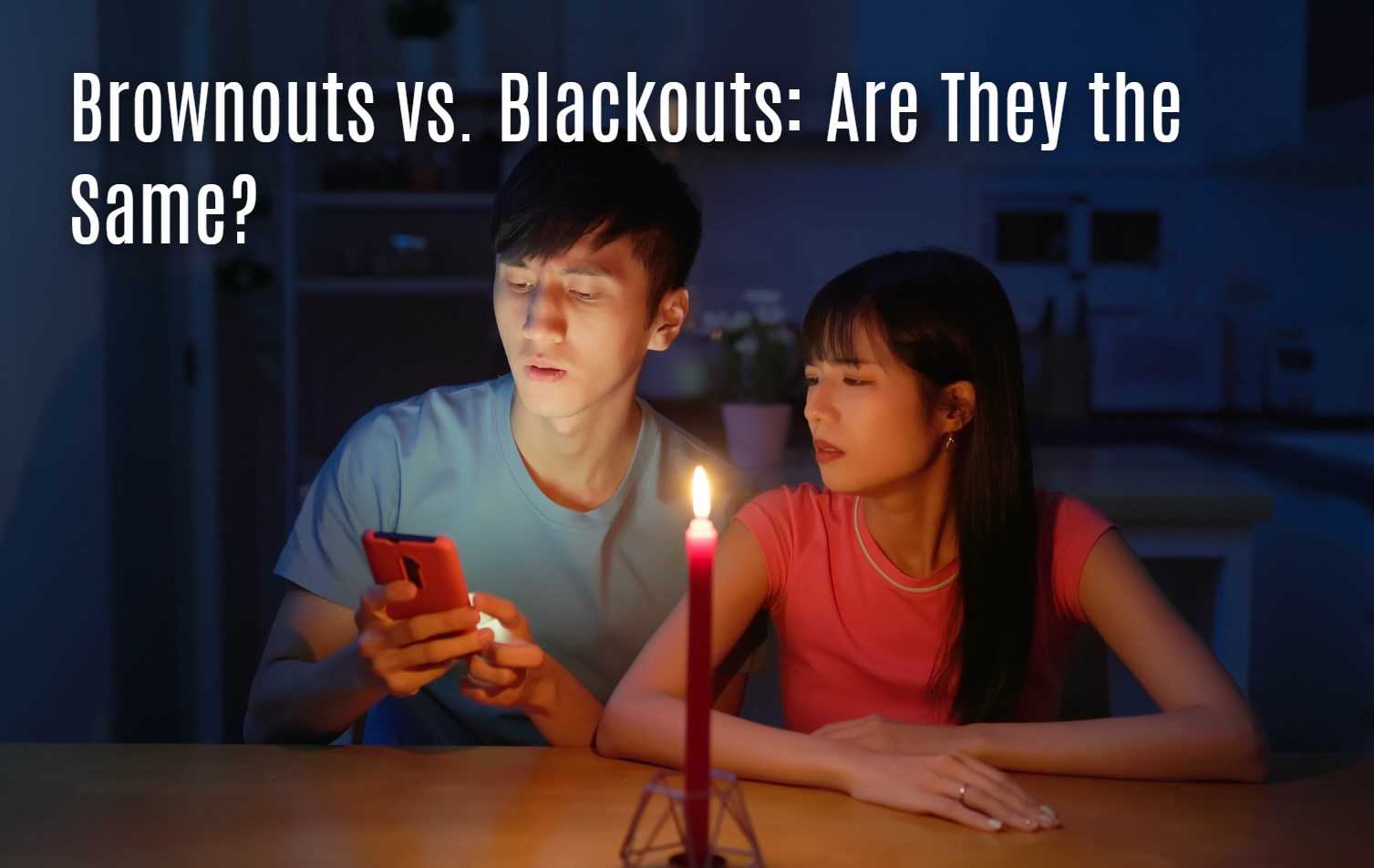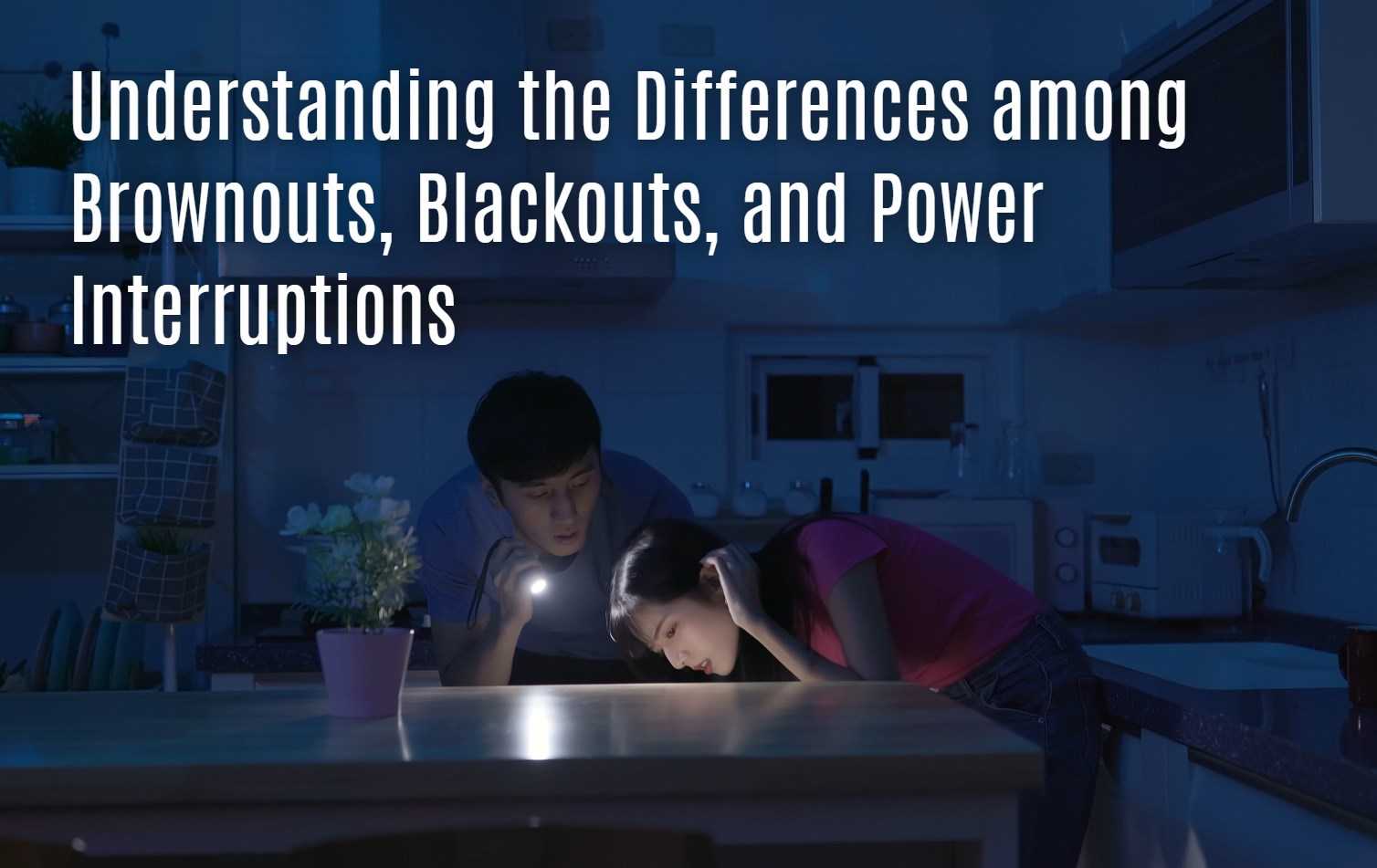Power outages can occur for various reasons, both natural and artificial, such as storms, equipment failures, and high or low voltage. These outages are often referred to as brownouts, blackouts, or power interruptions. In this article, we will explore the distinctions between these terms and provide a comprehensive understanding of each.
Brownout:
A brownout is a temporary decrease in voltage levels within an electrical grid. It typically occurs when there is an overload on the power grid or a high demand for electricity. Factors such as circuitry faults or lightning strikes can also contribute to brownouts. During a brownout, the electrical system conserves power by reducing the voltage level, resulting in dimmed lighting and reduced performance of electronic equipment. While some devices may still function, the fluctuation in voltage can potentially cause damage. It’s important to note that brownouts can be intentionally initiated by electric companies as a measure to prevent complete blackouts.
Blackout:
In contrast, a blackout refers to a complete loss of power in an electrical grid, affecting an entire area or city. Blackouts can last for hours, days, or even weeks, and they are caused by a variety of factors including equipment failures, natural disasters, and human negligence. During a blackout, all electronically operated appliances, such as lights, refrigerators, televisions, and computers, lose access to electricity. This sudden and unexpected loss of power can result in significant commercial losses and disruptions.
Power Interruptions:
Power interruptions are temporary and localized power outages that affect specific areas within a region. These interruptions occur suddenly and typically last for only a minute or two. Common causes of power interruptions include tripped circuit breakers and accidents near power lines or utility poles. Power interruption incidents are managed and resolved quickly by power station workers to ensure a reliable power supply for customers.
Differences between Brownouts and Blackouts:
There are several distinctions between brownouts and blackouts:
1. Cause: Brownouts are primarily caused by high electricity demand, while blackouts can occur due to various factors such as equipment failures, natural disasters, and human errors.
2. Duration: Brownouts typically last for a few hours or minutes, whereas blackouts can persist for extended periods, ranging from hours to days or even weeks.
3. Voltage Levels: During a brownout, the voltage levels fluctuate, causing devices to operate at lower or inconsistent power levels. In contrast, during a blackout, there is a complete loss of power, rendering electronic devices inoperable.
4. Damage Risk: Brownouts pose a higher risk of damaging electronic equipment due to the fluctuation in voltage levels. In contrast, blackouts do not pose a direct risk of damage as there is no power supply.
5. Intentionality: Brownouts can be intentionally initiated by electric companies as a means to manage power demand, whereas blackouts are typically unintentional and unexpected.
Brownouts vs. Blackouts: Are They the Same?
No, brownouts and blackouts are not the same. While both terms refer to temporary power outages, brownouts involve a decrease in voltage levels, while blackouts result in a complete loss of power. Brownouts are often intentional and can be managed, whereas blackouts are typically unplanned and may cause significant disruptions and losses.

Are Brownouts Worse than Blackouts?
In terms of potential damage to electronic equipment, brownouts are generally considered worse than blackouts. The fluctuation in voltage levels during a brownout can lead to electrical appliances being burned out or damaged. In a blackout, however, there is no voltage issue, and electronic devices are simply without power. It is advisable to refrain from using electronic equipment during brownouts and to turn off and unplug devices to prevent damage.
Top 10 Questions and Answers for Practitioners in the Energy Storage or Solar Industry:
1. How can energy storage systems help mitigate the impact of brownouts and blackouts?
2. What are the most common causes of blackouts and how can they be prevented?
3. How does the integration of renewable energy sources, such as solar power, affect the occurrence of brownouts and blackouts?
4. What role does battery storage play in ensuring a reliable power supply during power interruptions?
5. How can advanced monitoring and control systems assist in identifying and resolving power outages more efficiently?
6. Are there specific regulations or standards in place for maintaining grid stability and preventing brownouts and blackouts?
7. What are the economic implications of power interruptions on businesses and households?
8. How can microgrids contribute to reducing the impact of blackouts on critical infrastructure?
9. Are there incentives or programs available to promote the adoption of energy storage systems for resilience against power outages?
10. How can the combination of energy storage and renewable energy technologies help create a more resilient and sustainable power grid?
Remember, when facing a power outage, whether it’s a brownout, blackout, or power interruption, being prepared with backup power sources or having a plan in place can help mitigate the inconvenience and potential losses.




